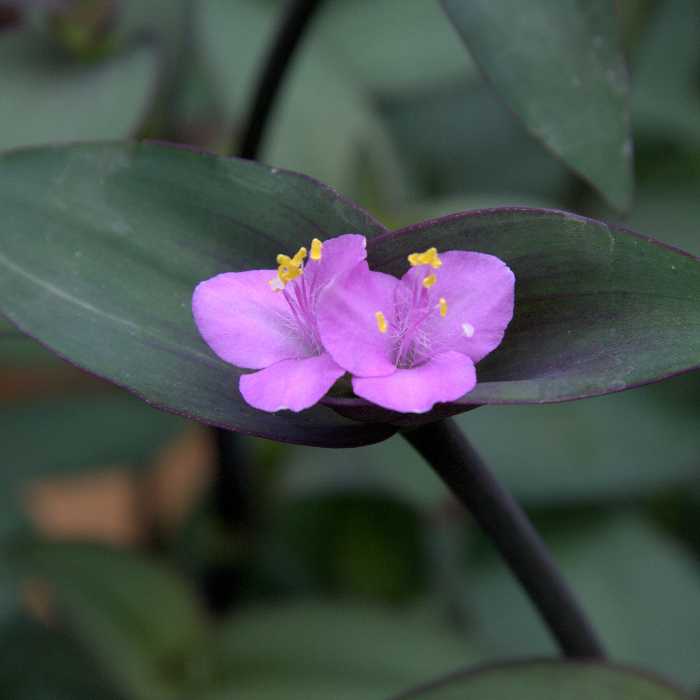Phuket Gardening: Papering Over the Cracks – plants to cover the ground

PHUKET: In my humble opinion, the two best ground cover plants are purple leaved spiderwort (tradescantia spathaceae) and purple heart or purple queen, now known botanically as setcreasea pallida.
Naturally there are many other choices for the tropical gardener. For instance, I use pandanus pygmaeus as an edging plant: grass-like in appearance, it is very tough, grows in clumps and has long narrow leaves bordered with bright yellow. The only problem is that the foliage has saw-like edges – a bit like pampas grass. So it should be handled with care. Another choice might be the similar looking ophiopogon or lillturf, which has prominent white margins. Both prefer sun.
Wedelia trilobata, with shiny, evergreen leaves and small daisy-like yellow flowers, is the most vigorous coverer of space. It has a creeping habit and stems that root as they carpet the ground. Especially good-natured, it occupies the spaces in my garden where the Malaysian grass fears to tread: on waste ground it often crops up unannounced. But it is untidy and that is where my top choices score: they are neatness personified.
Purple heart (setcreasea) is very common and extremely easy to grow – once it is established. This Mexican native is cultivated for its neat, trailing habit and distinctive, deep purple, lance shaped leaves. Slightly hairy, it is their rich hue and matt surface that renders them especially attractive. Growing only a few inches tall, the plant nonetheless produces a dense, colorful display that will completely envelope the immediate surroundings. Given a chance, its exotic foliage will cascade prettily down the sides of a pot.
The succulent stems are very brittle and snap easily. On the other hand, the roots are deceptively tough. So don’t make the mistake, as I did, of introducing cuttings into containers occupied by other shrubs. It will work if the other occupant is hardy, but less sturdy companions will find themselves losing the competition for food, water and space. I am planting purple heart where its beautiful carpet of foliage can be appreciated alone and for its own sake.
The other and in some ways similar tradescanthia or rhoeo spacthaceae is even more ubiquitous in Phuket: it is employed everywhere as a ground cover, on rock gardens, or to border pathways.
Despite its Central American origins, almost every garden center has a supply. Even neater than purple heart, it has short stems and soft but spiky rosettes of lance-shaped leaves that are green below and greenish purple above. It grows no more than a foot tall and forms an orderly and uniform mat or cushion Years ago, I planted a clump in a border some feet from the pool; it soon spilled over the edges of the confining sand-wash and is steadily advancing towards the water.
Unlike purple heart, this fellow has surprisingly shallow roots. In fact you can gently lift a portion from the edge of a cluster and transplant it elsewhere in shallow soil. It will probably survive. In fact it can be propagated from seeds (it has small white flowers),but clump division is the normal method. If you are planting specimens in a border as an edging plant, place them eight or ten inches apart: in favorable conditions, they will soon bridge the gaps.
There is an even more attractive variegated form of tradescantia with striped purple, green and white foliage. As with most variegated plants, it is less hardy than the standard version, and will only perform well in a sunny environment. But I have one happily sharing a container with an adenium. Share and share alike. No sweat…
If you have a question or a garden that you would like featured you can email me at: drpaccampbell@gmail.com. Further information about this gardening series and Patrick’s other work can be accessed at: patrickaccampbell.wordpress.com
— Patrick Campbell
Thai LifeLeave a Reply
You must be logged in to post a comment.








